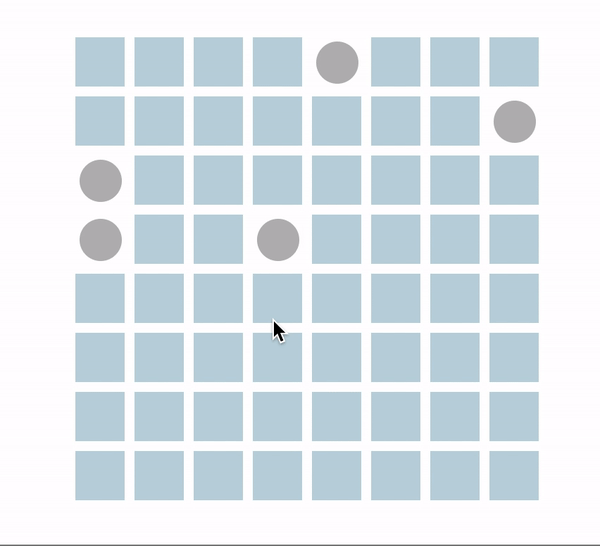
//Clair(sijing) Sun
//sijings@andrew.cmu.edu
//Assignment-5
var lineP=[];
var boolDoRefresh;
var numberofL=10;
function setup() {
createCanvas(480, 480);
boolDoRefresh = false;
for (var i=0; i<numberofL; i++){
var x1 = random(0,width);
var x2 = random(0,width);
var y1 = random(0,height);
var y2 = random(9,height);
lineP[i] = [x1,y1,x2,y2];
}
}
function draw() {
background(200);
//regenerate if mousePressed
if (boolDoRefresh) {
for (var i=0; i<numberofL; i++){
var x1 = random(0,width);
var x2 = random(0,width);
var y1 = random(0,height);
var y2 = random(9,height);
lineP[i] = [x1,y1,x2,y2];
}
boolDoRefresh=false
}
//for drawing the lines
for (var i = 0; i < numberofL; i += 1){
line(lineP[i][0],lineP[i][1],lineP[i][2],lineP[i][3]);
}
//for drawing the intersections, spliting to two lines each time
for (var j = 0; j < numberofL; j += 1){
for (var i = 0; i < numberofL; i += 1){
var x1 = lineP[j][0];
var y1 = lineP[j][1];
var x2 = lineP[j][2];
var y2 = lineP[j][3];
var x3 = lineP[i][0];
var y3 = lineP[i][1];
var x4 = lineP[i][2];
var y4 = lineP[i][3];
intersect(x1, y1, x2, y2, x3, y3, x4, y4);
}
}
}
// Modified from line intercept math by Paul Bourke http://paulbourke.net/geometry/pointlineplane/
// Determine the intersection point of two line segments
// Modified from http://paulbourke.net/geometry/pointlineplane/javascript.txt
function intersect(x1, y1, x2, y2, x3, y3, x4, y4) {
if ((x1 == x2 && y1 == y2) || (x3 == x4 && y3 == y4)) {
return false
}
var denom = ((y4 - y3) * (x2 - x1) - (x4 - x3) * (y2 - y1))
if (denom === 0) {
return false
}
var ua = ((x4 - x3) * (y1 - y3) - (y4 - y3) * (x1 - x3)) / denom
var ub = ((x2 - x1) * (y1 - y3) - (y2 - y1) * (x1 - x3)) / denom
// is the intersection along the segments
if (ua < 0 || ua > 1 || ub < 0 || ub > 1) {
return false
}
fill(0);
ellipse (x1 + ua * (x2 - x1),y1 + ua * (y2 - y1),15);
}
function mousePressed() {
boolDoRefresh = true;
}

